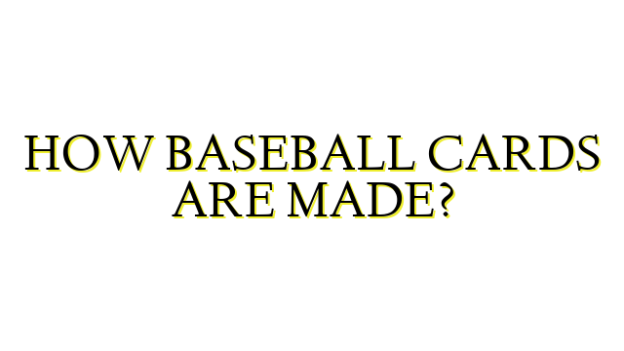The baseball card manufacturing process starts long before fans ever get to open packs of fresh cards. It begins during the previous baseball season as card companies closely follow the performance and stats of every player. Scouts and evaluators work to determine which players should be featured in upcoming series of cards. Companies want to highlight breakout stars, big contributors to playoff teams, award winners, and other notable players from the season.
Once the season wraps up, card designers get to work on creating concepts and designs for the next year’s sets. They come up with visual themes, stylistic touches, photo selections, and other aspects that will define the overall look and feel of each particular card set. Designers work closely with marketing and licensing teams to make sure the final products align with the company’s broader plans and strategies.
After designs are approved, photographers begin arranging shoots to capture fresh photos of players for their new cards. This is a massive undertaking that requires coordinating with hundreds of athletes across the league. Photoshoots take place during spring training and the early part of the season. Players pose in uniform to get action shots as well static portrait pictures.
With photos in hand, artwork teams digitally design each individual baseball card template based on the approved visual concepts. Every detail from uniforms to backgrounds to fonts/colors is added. Player names, stats, team logos and more legal/licensed information is also included on the templates. Once all templates are complete, they are thoroughly quality checked.
Meanwhile, printing companies begin gearing up their massive production facilities to handle the large print runs. Presses, inks, papers and other materials are tested. Packaging designers also work on concepts and samples for things like wax pack wrappers, boxes and shopping displays. Mockups help ensure everything will fit together properly.
Card company licensing and marketing divisions work to officially approve all final assets. Legal teams thoroughly review every word, image, and design element to ensure proper usage of all trademarks, stats, and other intellectual properties. Minute adjustments may still need to be made at this stage.
With all creative and legal aspects fully approved, digital card templates are sent to printing facilities where millions of cards will be created. State-of-the-art printing presses use specialized inks and thick stock paper designed to hold up to handling. Presses run virtually non-stop, churning out sheet after sheet of multiple cards printed onto large panels.
At the same time, packaging assembly lines begin stitching together wax wrappers, filling boxes with carefully counted packs, sealing boxes, and readying them for distribution. All of this has to stay perfectly in sync with the card printing to avoid bottlenecks. Quality control thoroughly inspects every stage.
After printing and packaging, it’s time for logistics. Truckloads of freshly made cards and carefully assembled product are shipped to regional warehouses across North America. From there, individual cases are delivered to hobby shops, big box stores, online retailers and more.
Through this intensive months-long process, card companies work tirelessly to stock the collectibles aisles with the newest baseball cards in time for the next season. Only then can eager fans start digging through packs hoping to uncover the next big rookie card or autograph of their favorite star player.

